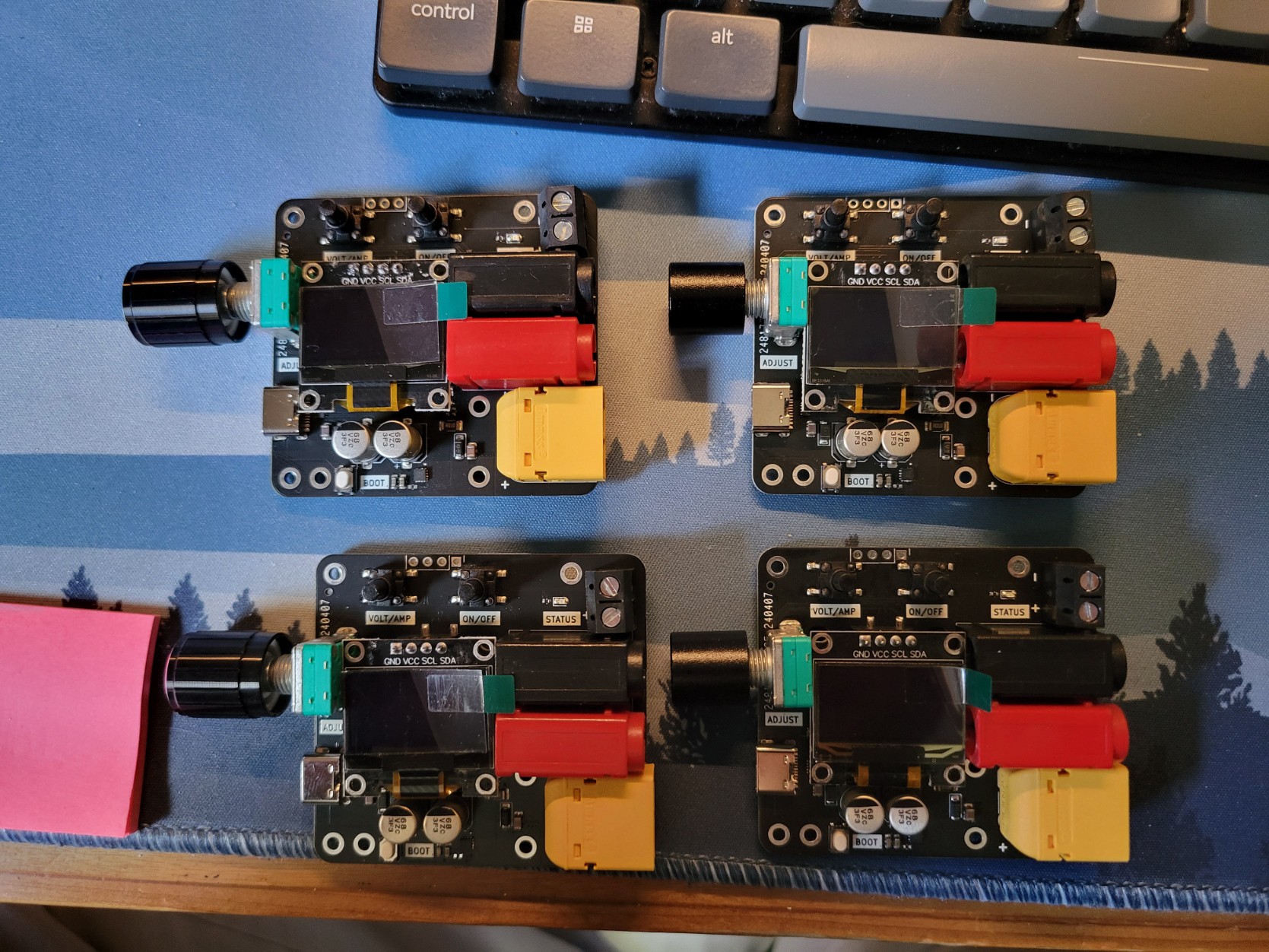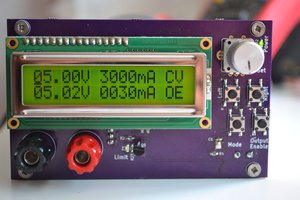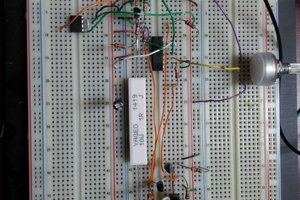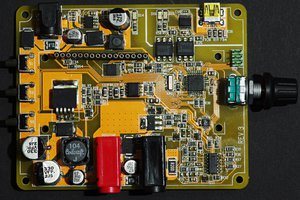Our current goal for this project is to provide the software as open-source after development and functional testing. Further development for other applications could reuse part of the code. Example applications are custom LiFePO4 or LiPo chargers, reflow ovens, or hotplates.
As the DIY community has grown, there are multiple ways to implement control features like adjusting parameters via Wifi, Bluetooth, or touch screen. We want to keep the design language simple, just physical knobs and buttons to control. This will give the system higher reliability when you need it to work.
The open-source software will feature:
- OLED display
- Rotary Encoder with button as input
- Ability to turn on/off output switch
- Read current and voltage from INA226
Here is where I am at:
- [x] Rotary encoder implementation for voltage and current knob
- [x] OLED display working. Showing welcome screen, PDOs, and voltage/current data
- [x] Implement course and fine control for voltage knob
- [x] Display mode switch from CC to CV and vice-versa
- [x] Current limit mode
- [x] Correctly display current reading (calibration)
- [x] Testing current limit mode with different PPS supplies.
- [ ] Work with non-PPS power supply by tapping into PDOs
Preliminary hardware specification:
- Input/Output voltage: 3.3V - 20.5V
- Max output current: 3A or 5A depending on the USB-C cable and source
- Input protection: ESD protection
- Output protection: ESD protection, flyback diode protection, over-current protection, short circuit protection, reverse current protection
Design iteration:

Testing unit:

 CentyLab
CentyLab







 Shuo Cao
Shuo Cao
 Elia
Elia
 Marc-O.
Marc-O.
I'm looking for help for a dgi agras drone to disactivate the no fly zone can some one help me